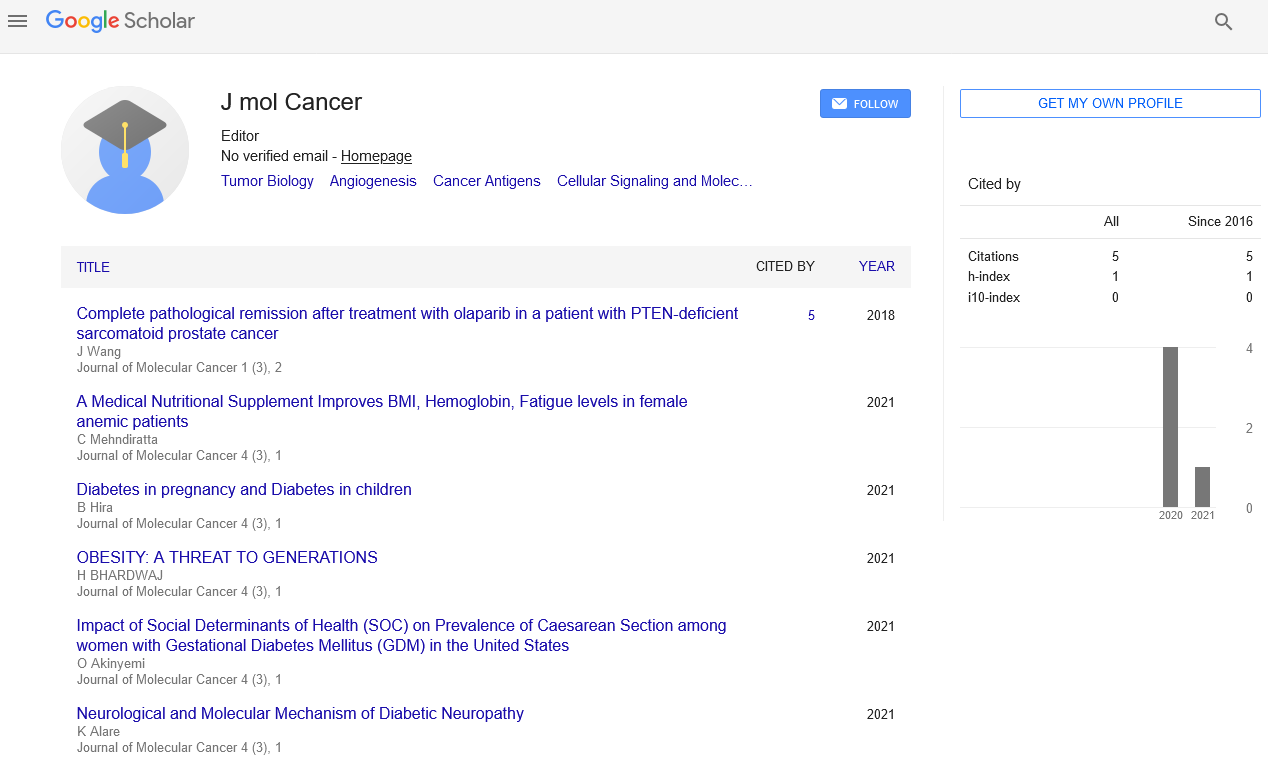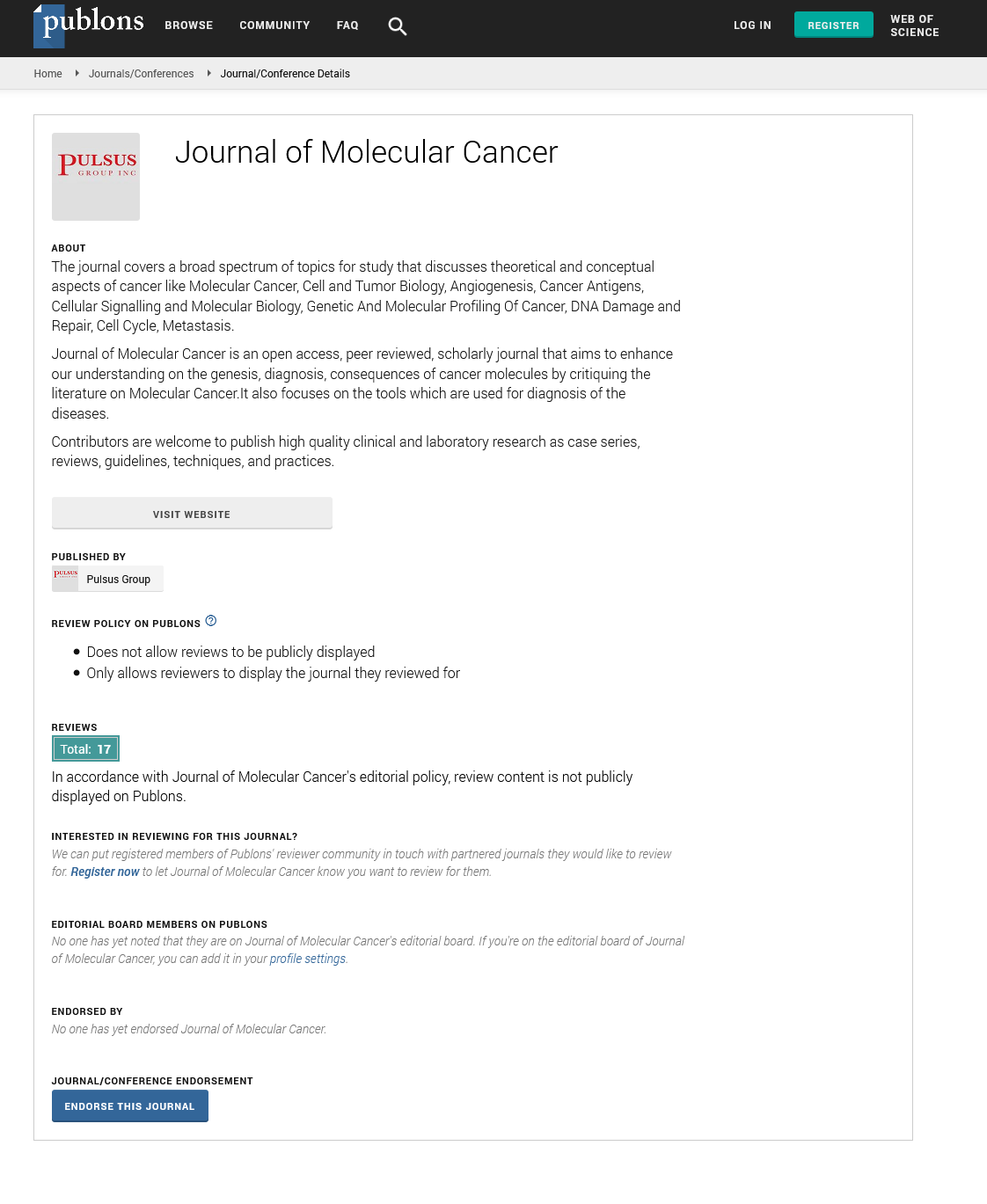Maximum oncogenes started as proto-oncogenes: normal genes involved in mobile growth
This open-access article is distributed under the terms of the Creative Commons Attribution Non-Commercial License (CC BY-NC) (http://creativecommons.org/licenses/by-nc/4.0/), which permits reuse, distribution and reproduction of the article, provided that the original work is properly cited and the reuse is restricted to noncommercial purposes. For commercial reuse, contact reprints@pulsus.com
Introduction
Maximum everyday cells will go through programmed form of speedy mobile death (apoptosis) when important functions are altered and malfunctioning. Activated oncogenes can reason the ones cells special for apoptosis to continue to exist and proliferate alternatively [1]. Maximum oncogenes started as proto-oncogenes: normal genes involved in mobile growth and proliferation or inhibition of apoptosis. If, via mutation, everyday genes promoting cell increase are up-regulated (benefit-of-characteristic mutation), they may predispose the cellular to cancer; as a result, they're termed "oncogenes". Generally more than one oncogenes, in conjunction with mutated apoptotic or tumor suppressor genes will all act in live performance to purpose most cancers. For the reason that 1970s, dozens of oncogenes have been identified in human cancer. Many most cancers tablets goal the proteins encoded by oncogenes [2]. The idea of oncogenes become foreshadowed through the German biologist Theodor Boveri in his 1914 e book Zur Frage der Entstehung Maligner Tumoren (regarding the beginning of Malignant Tumors) wherein he expected the existence of oncogenes (Teilungsfoerdernde Chromosomen) that grow to be amplified (im permanenten Übergewicht) during tumor improvement. In a while, the time period "oncogene" changed into rediscovered in 1969 by means of country wide cancer Institute scientists George Todaro and Robert Huebner. The first showed oncogene changed into determined in 1970 and changed into termed SRC (stated "sarc" as it's far short for sarcoma) [3]. SRC turned into first discovered as an oncogene in a hen retrovirus. Experiments executed through Dr. G. Steve Martin of the University of California, Berkeley tested that SRC turned into certainly the gene of the virus that acted as an oncogene upon infection. A proto-oncogene is a normal gene that could turn out to be an oncogene because of mutations or multiplied expression. Proto-oncogenes code for proteins that assist to adjust the cell boom and differentiation [4]. Proto-oncogenes are regularly concerned in sign transduction and execution of mitogenic indicators, normally through their protein products. Upon acquiring an activating mutation, a proto-oncogene becomes a tumor-inducing agent, an oncogene. Examples of proto-oncogenes consist of RAS, WNT, MYC, ERK, and TRK. The MYC gene is implicated in Burkitt's lymphoma, which begins while a chromosomal translocation movements an enhancer series within the location of the MYC gene.
References
- Czernilofsky AP, Levinson AD, Varmus HE, et al. Nucleotide sequence of an avian sarcoma virus oncogene (src) and proposed amino acid sequence for gene product. Nature 1980;287(5779): 198–203.
- Shih, C; Weinberg. Isolation of a transforming sequence from a human bladder carcinoma cell line. Cell 1982; 29 (1): 161–9.
- Reddy EP, Reynolds RK, Santos E, et al. A point mutation is responsible for the acquisition of transforming properties by the T24 human bladder carcinoma oncogene. Nature 1982; 300 (5888): 149–52.
- Negrini M, Ferracin M, Sabbioni S et al. MicroRNAs in human cancer: from research to therapy. Journal of Cell Science 2007; 120 (Pt 11): 1833–40.
- Esquela-Kerscher A, Slack FJ. "Oncomirs - microRNAs with a role in cancer". Nature Reviews. Cancer 2006; 6 (4): 259–69.






